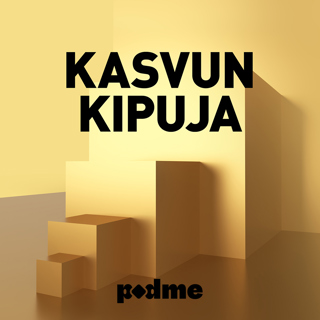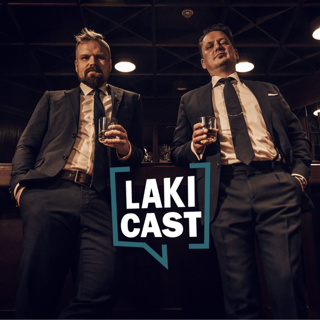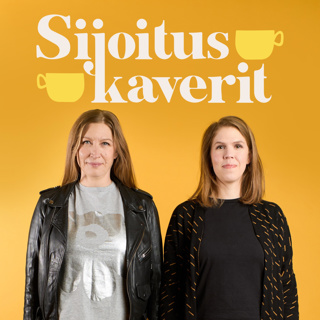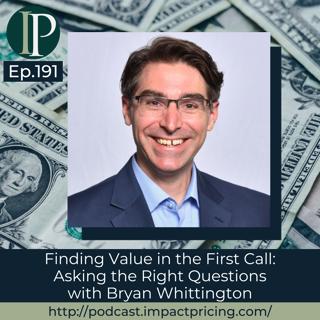
Finding Value in the First Call: Asking the Right Questions with Bryan Whittington
Bryan Whittington is the founder of ebs/growth, a firm that helps companies create a more effective sales team. Also, he is the host of the Talent Sales & Scale podcast, and was a sales trainer for over ten years. In this episode, Bryan discusses how he handles exploratory or discovery calls. He explains how he talks with his clients and potential clients in order to find the root cause of their problems, and shares some of his techniques to get these clients to propose the possible solutions to their problems themselves. Why you have to checkout today's podcast: Learn how an expert like Bryan Whittington handles discovery calls Acquire new techniques in scrutinizing your clients' problems Discover smart ways to find a solution to your clients' problems "Pricing is a belief. You either believe that your price is not worth what you're asking, or you're able to convey that your price is worth it to your prospect, your buyer. But price is absolutely a belief. You choose which belief you want." – Bryan Whittington Topics Covered: 01:15 – How Bryan got into pricing 02:08 – Selling value vs. selling a commodity 05:08 – What to avoid when having a discovery call 07:02 – How to handle a discovery call, step 1 09:23 – Why it is better to setup that next meeting 13:30 – How to handle a discovery call, step 2 14:19 – Why you shouldn't allow your clients to rate their problem a 7/10 15:01 – How to handle a discovery call, step 3 17:59 – Finding out the root cause of the clients' problems 22:54 – When and how to name the price of your solution based on the magnitude of the problem 24:46 – Pricing table topics: "Salespeople use every tool available to close a deal. When given authority to discount, they will use it more often than necessary" 28:20 – Bryan's pricing advice Key Takeaways: "Sales is how you identify what their challenges are, whether or not you can solve the problem of those challenges, and then understand the value of you fixing those problems for that organization will be, and you can charge an appropriate value for it." – Bryan Whittington "That conversation should take anywhere between 5 to 8 minutes. And if it's longer than that, you've already started your initial first sales call, and I wouldn't suggest you do that." – Bryan Whittington "Often, the problem that the person brings you is never really the problem. We have to identify the real root cause to know whether or not your solution will work. If your solution won't work for that root cause, then make an introduction to somebody where it will." – Bryan Whittington People / Resources Mentioned: ebs/growth: https://ebsgrowth.com/ Talent, Sales & Scale Podcast: https://ebsgrowth.com/podcast/ Connect with Bryan Whittington: LinkedIn: https://www.linkedin.com/in/brywhittington/ Email: bryan@ebsgrowth.com Connect with Mark Stiving: LinkedIn: https://www.linkedin.com/in/stiving/ Email: mark@impactpricing.com
26 Syys 202230min

Blogcast #73: Training Salespeople
This is an Impact Pricing Blog published on August 17, 2022, turned into an audio podcast so you can listen on the go. Read Full Article Here: https://impactpricing.com/blog/training-salespeople/ If you have any feedback, definitely send it. You can reach us at mark@impactpricing.com. Now, go make an impact. Connect with Mark Stiving: Email: mark@impactpricing.com LinkedIn: https://www.linkedin.com/in/stiving/
23 Syys 20224min
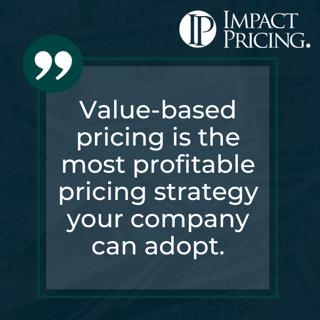
Memecast #76: King of Spades: The Most Profitable Pricing Strategy
This one is the King of Spades from the Selling Value card deck. It's true, value-based pricing is the most profitable pricing strategy you can adopt. If you think about it, the definition of value-based pricing is charge what your customers are willing to pay. Now, that seems pretty simple, but if you knew exactly how much your customers were willing to pay, and you charged that amount, then you can't possibly make more money. If you charge less than that amount, you end up leaving money on the table. If you charge more than that amount, your buyer doesn't buy. So, by definition, value-based pricing is the most profitable pricing strategy you can adopt. However, it's impossible to do perfectly because there's no way that you know how much somebody is willing to pay for your product. We can't read our customer's minds. What we can do though, is adopt this as a strategy, an attitude, a goal, and continue to do things so that we can learn more and more about our markets and our customer's willingness to pay and get to the point where we're capturing more of it each time. We hope you enjoyed this memecast. This is also an example of how Pricing Table Topics works. Grab a deck of our cards, pull a random card, read the saying, and then talk for one to two minutes about what that card says. This will improve your understanding and more importantly, your ability to communicate important concepts about value. If you have any questions or feedback, please email me mark@impactpricing.com. Now, go make an impact. Connect with Mark Stiving: Email: mark@impactpricing.com LinkedIn: https://www.linkedin.com/in/stiving/
21 Syys 20222min
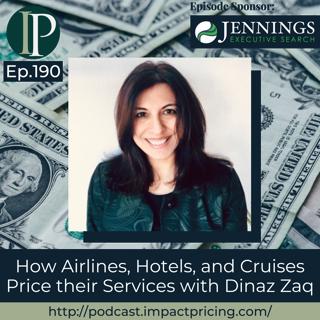
How Airlines, Hotels, and Cruises Price their Services with Dinaz Zaq
Dinaz Zaq is the Director at Revenue Pricing Consultants in London, the "home of revenue management and pricing expertise" that focuses on increasing profitability through diagnostic review. Dinaz spent 20 years in Revenue Management at British Airways, and also worked for resorts, hotels, and cruise lines. In this episode, Dinaz explains how airlines, hotels, and cruises do pricing as she shares some of the strategies they use in line with the factors that affect their pricing decisions. Why you have to check out today's podcast: Understand how most airlines, hotels, and cruises do pricing; Discover the strategies they use and the factors that affect their pricing decisions; and Find out why each employee – even the cabin crews – are important on getting customers and providing great service "The biggest thing that you need to get right is your demand before you make any pricing decision at all." – Dinaz Zaq Topics Covered: 01:32 – How Dinaz got into pricing 03:02 – How do airlines do pricing? What factors affect their pricing decisions? 10:03 – The strategy behind "I will get the best price on a domestic flight if I book it six weeks before my flight" 11:47 – The difference between pricing hotels and pricing airplane seats 14:06 – Why hotels don't hold their prices really high for last-minute travelers 15:53 – Hotels and discounts on their rates 16:40 – What is the strategy of cruises when it comes to pricing? 20:35 – Pricing table topics: "Every employee creates or destroys value" 22:35 – Dinaz's pricing advice Key Takeaways: "Things depend, really, on the strategy that the airline follows and what's the flavor of the day as far as their management is concerned." – Dinaz Zaq "You might get some hotels that won't drop their price. Some might even take walk ins at the door for a cheaper price. They don't want to publish it on the internet. Airlines might. It's about, you know, when we talk strategy, when you try to hold the price then drop it later, you can sell it through a different distribution channel so that it doesn't hit the public and therefore not destroy your pricing strategy." – Dinaz Zaq "Their strategy is to fill it to 100%, and that's why you might find cruise prices dropping near at the time quite a bit. But what the customer misses out on is you may not get your best cabin if you wait too long, because the people that are regular cruisers, they have got all the balconies and then you'd be stuck somewhere on top of the discotheque or in a noisy area or whatever." – Dinaz Zaq People / Resources Mentioned: British Airways: https://www.britishairways.com/ STR: https://str.com/ Marriott: https://www.marriott.com/ Hotwire: https://www.hotwire.com/ Priceline: https://www.priceline.com/ Booking.com: https://www.booking.com/ Hotels.com: https://www.hotels.com/ Connect with Dinaz Zaq: LinkedIn: https://www.linkedin.com/in/rpcltd/ Email: revenuepricingconsultants@outlook.com Connect with Mark Stiving: LinkedIn: https://www.linkedin.com/in/stiving/ Email: mark@impactpricing.com
19 Syys 202224min

Blogcast #72: Discovered Value
This is an Impact Pricing Blog published on August 10, 2022, turned into an audio podcast so you can listen on the go. Read Full Article Here: https://impactpricing.com/blog/discovered-value/ If you have any feedback, definitely send it. You can reach us at mark@impactpricing.com. Now, go make an impact. Connect with Mark Stiving: Email: mark@impactpricing.com LinkedIn: https://www.linkedin.com/in/stiving/
16 Syys 20223min
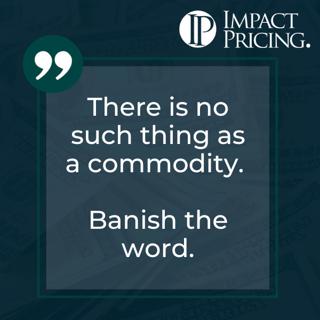
Memecast #75: Ace of Diamonds: Banish the Word 'Commodity'
This one is the Ace of Diamonds from the Selling Value card deck. When companies or people inside companies say we sell a commodity, what that says to me is they don't understand the value of what they offer. It may absolutely be true that you sell a commodity-like product where we're selling gold coins and your gold coins are exactly the same as your competitor's gold coins. And we could think of that maybe as a commodity, but then that's really not what we're selling. What we have to sell are all the things that go around the gold coins or go around our commodity-like product. We should be thinking about what are the services? Can we do better delivery? Can we do better payment terms? Can we make our customers trust us more? Can we give them better advice? There are many, many different ways that we might be able to add value to our buyers above and beyond the individual product that we're selling. I often think that when people are saying the words, we sell a commodity or our product is a commodity, they've actually stopped thinking about how they're better than their competition. They've stopped thinking about what their buyers really care about. So, in my mind, there really is no such thing as a commodity and all companies should banish the word. We hope you enjoyed this memecast. This is also an example of how Pricing Table Topics works. Grab a deck of our cards, pull out a random card, read the saying, and then talk for one to two minutes about what that card says. This will improve your understanding and more importantly, your ability to communicate these important concepts. If you have any questions or feedback, please email me mark@impactpricing.com. Now, go make an impact. Connect with Mark Stiving: Email: mark@impactpricing.com LinkedIn: https://www.linkedin.com/in/stiving/
14 Syys 20222min
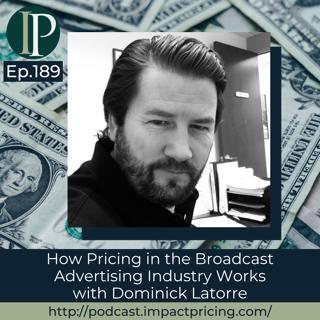
How Pricing in the Broadcast Advertising Industry Works with Dominick Latorre
Dominick Latorre is the Senior Director of Yield and Inventory Management at Sinclair Broadcast Group. He used to be the Manager of Pricing and Planning at Spectrum Reach, and he's the Assistant General Manager of the Men's National Team in USA Ball Hockey. In this episode, Dominick explains how they price slots for broadcast advertisements as he relates it to how airlines do pricing for their seats. Why you have to check out today's podcast: Learn how Sinclair does pricing for perishable inventory like ads Understand how it's related to how airlines price their seats Find out why it's important that your sales people know how to make sure that your service is priced effectively "It's educating yourself on different industries outside of yours and how you can take those concepts and those ideas and apply them to your business. – Dominick Latorre Topics Covered: 02:01 – How Dominick got into pricing 04:12 – Sinclair's goal to improve efficiencies with the local pricing experts and revenue with pricing 06:41 – "It is not what I wanted. It's not what I wanted to buy." 09:25 – Relating and comparing how Sinclair does pricing to how airlines price their seats 14:46 – The factors that affect how Sinclair price the programs 18:38 – Pricing for political campaigns 23:01 – Pricing table topics: "Create real value with differentiation. Create perceived value with marketing." 25:36 – Dominick's pricing advice Key Takeaways: "I'm very happy with the choice I made back in 2007-ish to get into pricing, because as obviously as you know, it's the biggest driver of profit if you're priced correctly, so much more than sales volume or anything else." – Dominick Latorre "With the various choices for marketing dollars these days, you can't be upsetting clients and pulling multi-million-dollar deals because we weren't priced effectively and given them a rate that from day one it should have been a premium program; obviously, the demand is there. We should be charging it based upon that." – Dominick Latorre "You can drive more revenue by lowering your rates, and we've seen that in some cases." – Dominick Latorre "We talk to our sellers all the time. Sell the value of the program. Don't combine it with other solutions. Don't sell a customer what we call a 9A4P rotator, where basically that customer spot could fall anywhere between that time period. That's not selling value. Look at the value of our solutions and price accordingly to them." – Dominick Latorre "With so many marketing solutions out there and dollars to be spent, you have to make sure that you're priced effectively. And again, talking about value, making sure that the buyers see the value in your solution." – Dominick Latorre People / Resources Mentioned: Sinclair Broadcast Group: https://sbgi.net/ Professional Pricing Society: https://www.pricingsociety.com/ Connect with Dominick Latorre: LinkedIn: https://www.linkedin.com/in/dominicklatorre/ Email: dmlatorre@sbgtv.com Connect with Mark Stiving: LinkedIn: https://www.linkedin.com/in/stiving/ Email: mailto:mark@impactpricing.com
12 Syys 202228min

Blogcast #71: Perfect Pricing
This is an Impact Pricing Blog published on August 3, 2022, turned into an audio podcast so you can listen on the go. Read Full Article Here: https://impactpricing.com/blog/perfect-pricing/ If you have any feedback, definitely send it. You can reach us at mark@impactpricing.com. Now, go make an impact. Connect with Mark Stiving: Email: mark@impactpricing.com LinkedIn: https://www.linkedin.com/in/stiving/
9 Syys 20223min







